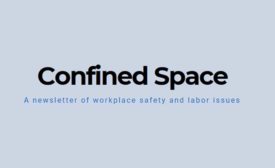Home » railroad industry
Articles Tagged with ''railroad industry''
322,000 gallons of hazmat released
NTSB: Derailment shows need for use of safer rail tank cars
October 31, 2018
A Confined Space blog post
Don’t want to be incinerated in your sleep? Too bad
September 28, 2018
Become a Leader in Safety Culture
Build your knowledge with ISHN, covering key safety, health and industrial hygiene news, products, and trends.
JOIN TODAYCopyright ©2025. All Rights Reserved BNP Media.
Design, CMS, Hosting & Web Development :: ePublishing




